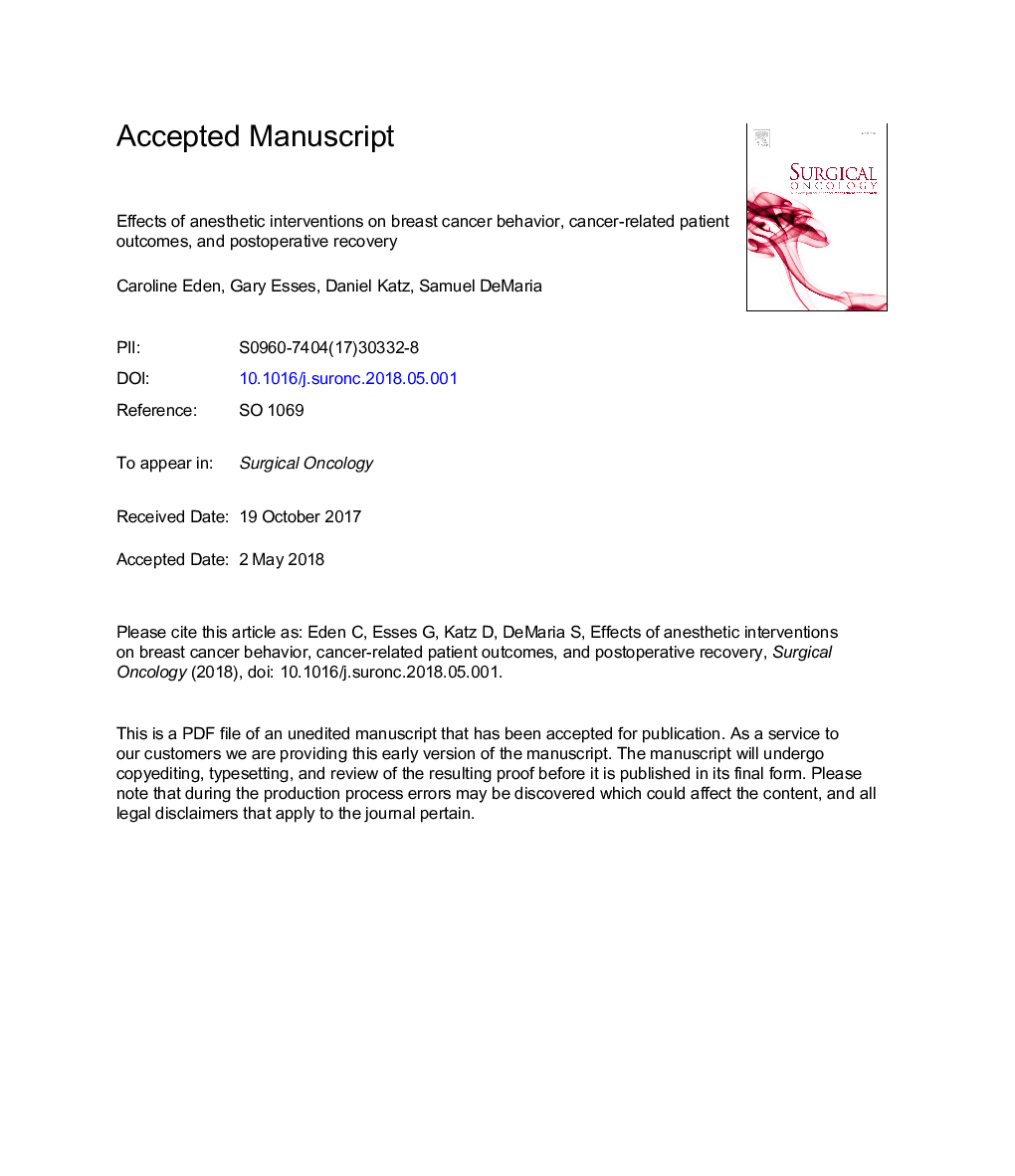| Article ID | Journal | Published Year | Pages | File Type |
|---|---|---|---|---|
| 8789759 | Surgical Oncology | 2018 | 22 Pages |
Abstract
This narrative review will summarize our current understanding of the effects of perioperative interventions on patients undergoing surgical removal of breast malignancies. It will focus on how different anesthetic agents and perioperative interventions might affect both breast cancer behavior and/or tumor recurrence as well as postoperative recovery. The main objective of this study will be to describe the evidence and critically analyze preclinical and clinical studies on the use of intravenous versus inhaled anesthetic agents, opioids, regional anesthetics, and anesthetic adjuncts in patients undergoing breast cancer resection. We will look both at the evidence regarding cancer-related outcomes and postoperative recovery. A search of PubMed, from inception to May 2017 was performed using Mesh terms Breast Neoplasms [Mesh] OR cancer AND breast AND Anesthesia [Mesh]; “Anesthetics”[Mesh] AND “Breast Neoplasms/surgery”[Mesh]. Although no optimal anesthetic combination has been identified for patients undergoing breast cancer resection, it should be noted that based on the available evidence, an ideal anesthetic in this patient population would involve a combination of TIVA (propofol), regional anesthesia (paravertebral block)), non opioid sedatives (clonidine or dexmedetomidine), and COX-2 inhibition (ketorolac). Based on the current evidence, this combination of anesthetic and analgesic agents has the best chance of improving cancer-related outcomes and postoperative recovery.
Related Topics
Health Sciences
Medicine and Dentistry
Oncology
Authors
Caroline Eden, Gary Esses, Daniel Katz, Samuel Jr,
